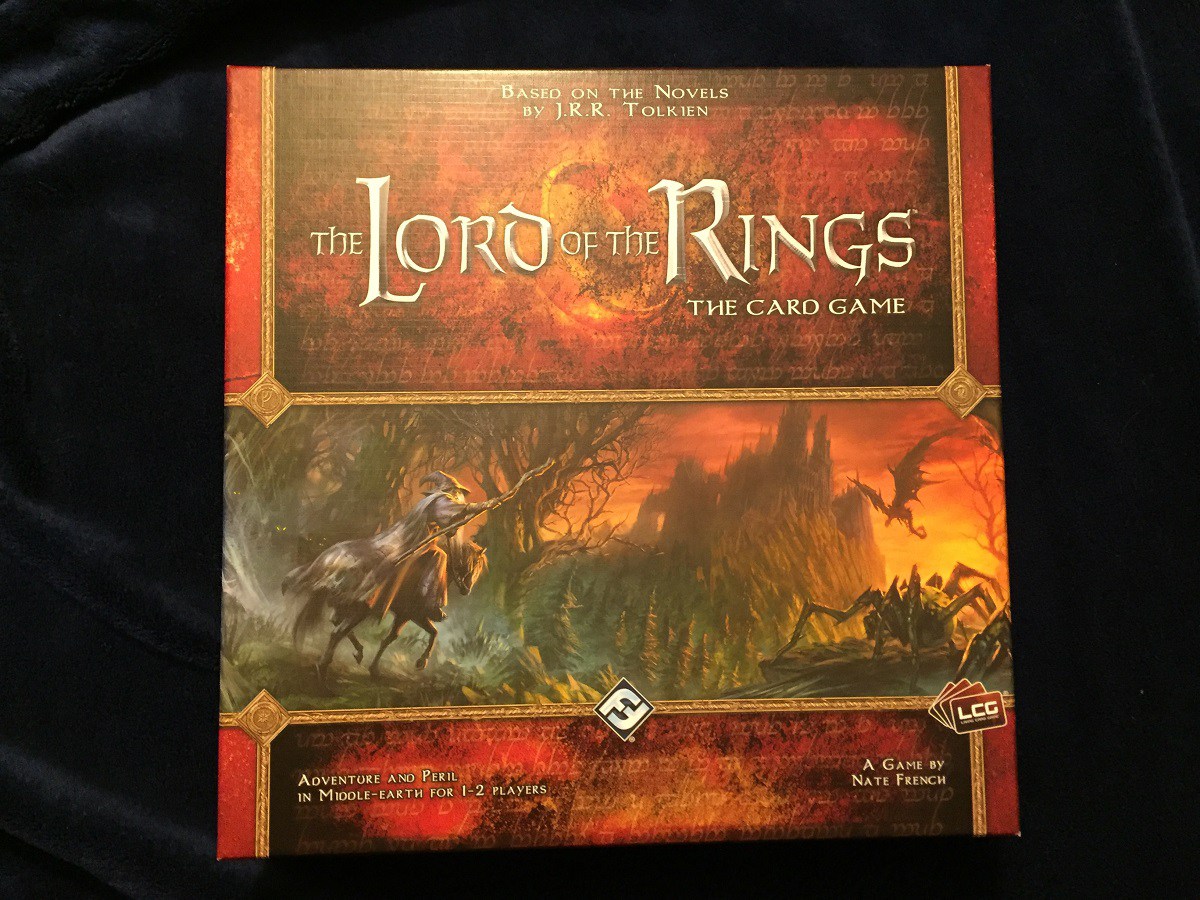
One of the fun things about having a kid is introducing him or her to all the most beloved geekdoms. In our house, Lord of the Rings is a top priority, so now that we have a young LOTR enthusiast we brought The Lord of the Rings: The Card Game, first released in 2011, back out to play. This game gives the serious LOTR fan a real taste of what it might have been like as part of the Fellowship. One does not simply walk into victory with this game.
What Is The Lord of the Rings: The Card Game?
The Lord of the Rings: The Card Game is a living card game made by Fantasy Flight Games, retailing for $40. A Living Card Game or LCG offers some of the more enjoyable experiences of collectible card games without the hassles of “blind-buying.” When you buy The Lord of the Rings: The Card Game, you get the basic set of cards. This allows you to play a two-player game with three quests; there is also an equally enjoyable single-player mode. You can buy a second copy of the game to play with more than two people. But the fun doesn’t stop there. Since the original core game came out in 2011, however, there are many different expansion packs that offer new cards, new characters, and new quests. If you like the core game, the possibilities are endless.
You know how Peter Jackson’s “extended editions” of the film are about four hours apiece? Well, if you’re tackling one of the more challenging scenarios, be prepared for an equally lengthy gameplay. The shortest gameplay time was 90 minutes, and some run much longer than that. There is also a definite learning curve, so allow plenty of time to figure things out when you first try it.
If your kids can handle The Lord of the Rings movies and books, they should do fine with this game. The age range is 13 and up, but that’s for complexity more than content. There’s nothing particularly frightening about it, although some cards do have vivid illustrations of orcs and other nasty denizens of Middle Earth. The complexity and amount of time it takes to play may be drawbacks for some families. One point in its favor for family usage: it is a cooperative game. Like the members of the Fellowship, you work together to complete your quest and overcome the forces of Evil. That means you can help out younger or newer players, much as Gandalf and Aragorn protected the hobbits.

The Lord of the Rings: The Card Game Components
- 10 Quest Cards
- 84 Encounter Cards
- 12 Hero Cards
- 120 Player Cards
- 2 Threat Trackers (which you assemble)
- 40 damage tokens
- 26 progress tokens
- 30 resource tokens
- 1 First Player token
This is a card game, so there are lots and lots of cards. Here’s a quick primer on each type:
The Quest Deck:

Quest Deck cards describe the tasks you need to achieve. The core game comes with three quests: “Passage through Mirkwood” (an easier quest), “Journey along the Anduin” (a medium-difficulty quest), and “Escape from Dol Guldur” (a hard quest). You select a quest when you set up the game. The quest dictates which enemies you will face and what tasks you will need to complete to win the game.
The Encounter Deck:

These cards represent the enemies and dangers you will face on your quest. For example, in the “Passage through Mirkwood” quest, you face giant spiders and orcs, among other creatures, and you travel to locations in or near the Forest of Mirkwood. “Treachery” cards represent unexpected traps, curses, or other dangers you encounter along the way. Some quests also include “Objective” cards, which must be attained or achieved in order to complete your quest.
Hero Cards:

Each player has a team of one to three heroes who participate in the quest. Playing the game with fewer heroes could be an excellent way to increase the challenge in the game if you’re feeling masochistic, but definitely give yourself a few tries on a normal (or even easy) difficulty level before you try that advanced maneuver.
Heroes have a “sphere of influence,” which affects the kinds of cards that hero can use. The spheres are Leadership (heroes: Aragorn, Gloin, Theodred), Lore (Glorfindel, Denethor, Beravor), Spirit (Eowyn, Dunhere, Eleanor), and Tactics (Legolas, Gimli, Thalin).
The Player Deck:

This deck includes attachments (such as gear, conditions, or skills), allies (other playable characters who can be used in a more limited way than your heroes), and events (like sneak attacks or healing actions). You can use the pre-designed player decks described in the rulebook or design your own player decks. The pre-designed ones work just fine as you learn the game, though some of them are clearly more powerful than others. If you use a pre-designed deck, all your heroes and cards are from the same sphere of influence, which makes it less confusing to figure out which heroes can use which cards—a big help if you are trying to follow the complex gameplay procedures for the first time.
All the components are of excellent quality and the artwork is fantastic. While the design is not directly linked to the Jackson films, the images will feel appropriately familiar to anyone who has seen the movies or read the books.
It is clear the makers of this game were genuine fans of the LOTR universe. Quotes from the books appear in the rulebook and on all the player cards, grounding the gameplay deeply in the world of Middle Earth. The player cards include many names you would expect, but fans of the novels will note the inclusion of characters such as Glorfindel, Theodred, and Gloin.

The cards’ only design flaw: they are packed with so much information it’s hard to find the details you need. For example, all initial game players are encouraged to use a pre-established deck made up of certain numbered player cards. The number on the player cards is literally small enough you need a magnifying glass to read it (see the circled number in the photo?), making it difficult to put together the decks. However, as you become more familiar with the gameplay and begin creating your own decks, this is less of an issue.
How to Play The Lord of the Rings: The Card Game
Before you begin playing, take time to familiarize yourself with the different information provided on each card. You may also want to watch a “how to play” video—there are some excellent ones made by Fantasy Flight games, the game’s developer.
Setup
Your first step should be to sort out the cards. Hero cards look a lot like regular player cards (look for the “hero” label at the bottom) and quest cards can get mixed up with the encounter deck. Save yourself the trouble: pull these cards out before you start shuffling!
- Choose your quest.
- Select the encounter deck cards that belong to your chosen quest.
- Choose your heroes.
- Select your player deck (or use the pre-designed ones listed in the rulebook).
Then take all the cards you don’t need for this game and put them away. Please, I’m begging you—you will have more than enough cards to think about in a minute.
Put your hero cards in front of you. Set your threat level based on your hero cards, using your threat tracker. If your threat level reaches 50 (in the core game), you are eliminated from play, and it will increase automatically with every round of the game.
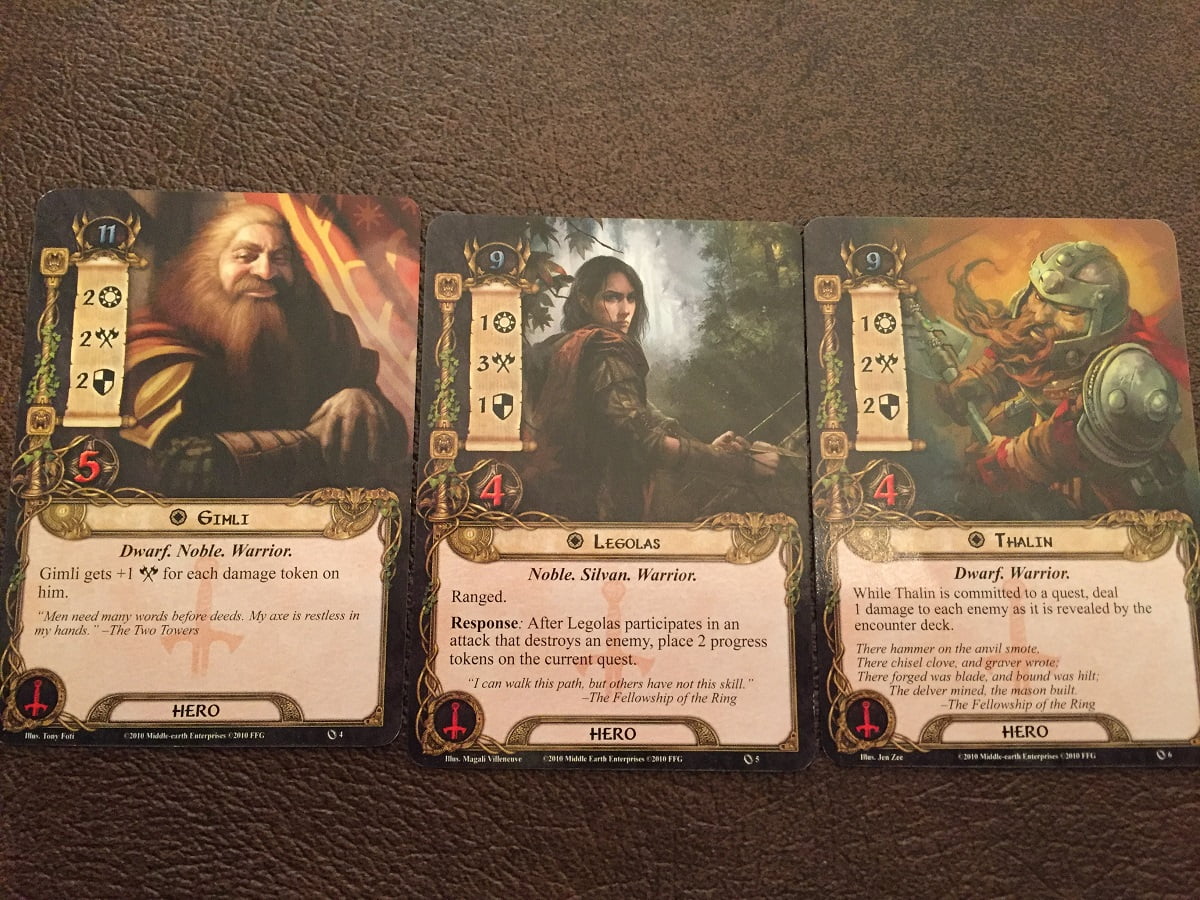
Set up your quest cards. Check the first card for any special starting conditions: the “Passage through Mirkwood” quest, for example, requires you to set up a Forest Spider enemy and the Old Forest Road location. Shuffle the encounter deck and set it up near the quest deck.
Set up an area to store the various tokens you will need: resource tokens (money), damage tokens (which look like a wound), and progress tokens (footprints).

Choose a First Player. The First Player designation shifts to a new player after each round. The First Player may also take more damage or get an additional bonus when arriving at a new location.
Shuffle your player deck and draw the top six cards. The rules allow you a “mulligan” for this first hand of cards only. If you don’t like them, you can shuffle them back into your deck and draw a new set of six cards. However, you have to hold on to your second hand of cards, no matter what.
Keep in mind that you will also have three discard piles: one for each player and one for the encounter deck.
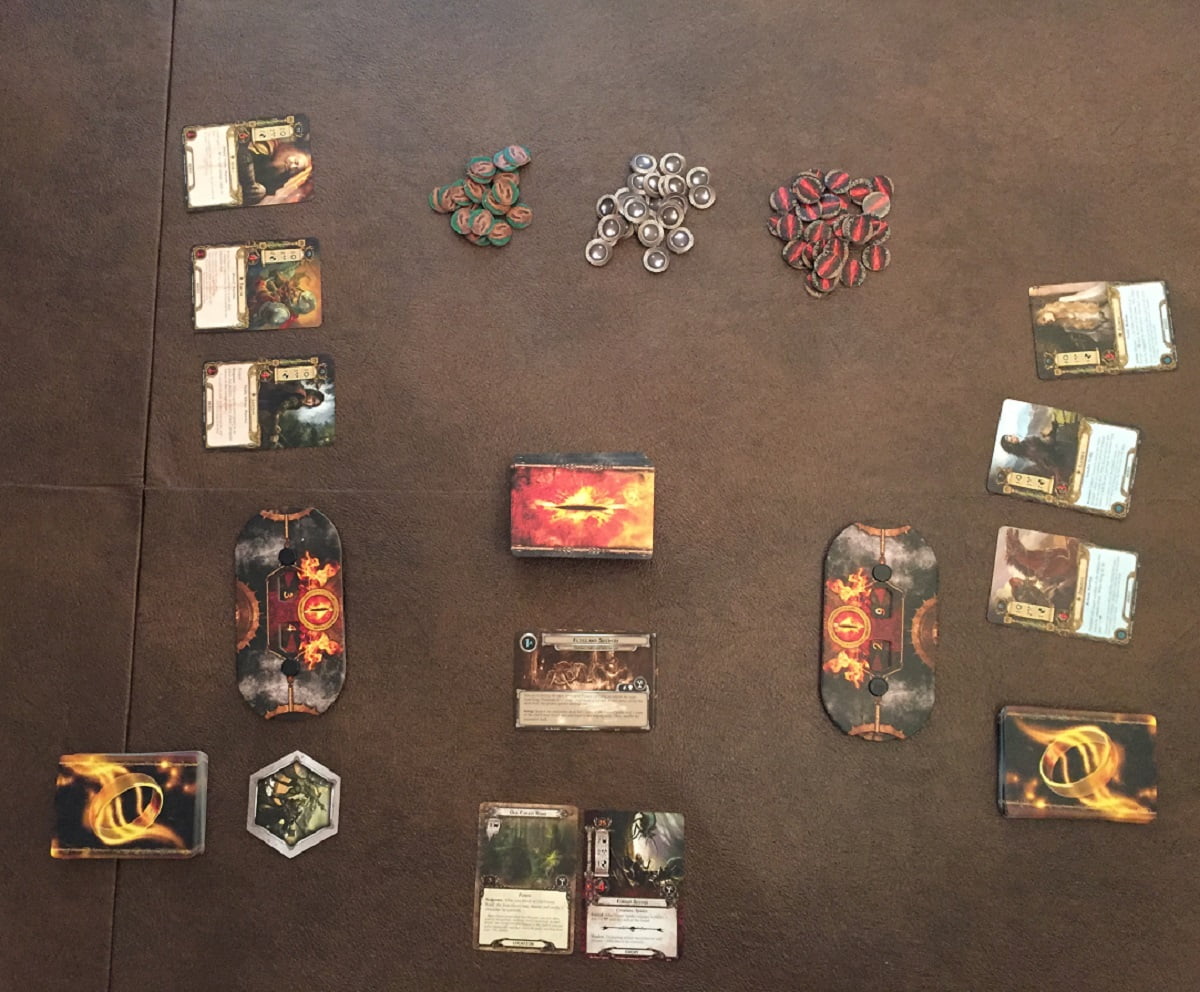
Playing Through a Round: Resource and Planning
Each round has seven phases:
1. Resource
2. Planning
3. Quest
4. Travel
5. Encounter
6. Combat
7. Refresh
Resource: In this phase, each player adds one resource token to each hero’s resource pool. The hero can use resources to pay for cards from the player deck that belong to that hero’s sphere of influence. If you have two heroes with the same sphere of influence, you can combine their resources to buy a card within that sphere. Then the player adds one card to his or her hand. The resource phase is completed by all players simultaneously.

Planning: This is when you can add ally and attachment cards from your hand, paying for them with resource tokens. The First Player completes his or her planning, then other players do their planning, moving in a clockwise direction around the table.
Quest and Travel
Now you will try to make progress on your current quest. First, you must commit characters to the quest. This “exhausts” the character, meaning it cannot do anything else during this round (unless you have a card that can be “readied” again). The rulebook suggests turning exhausted cards sideways so you can easily see who is ready and who is not. This “exhaustion” requires you to think carefully about which characters you commit. If you don’t put enough characters on the quest, you will make no progress, but if you commit too many characters, you may find yourself unprepared for attacks that come later in the round.

As a team, you and your fellow players want to have more willpower than the combined threat strength of the enemy and location cards in the staging area. In the photo above, the total threat level is 4 (see circled areas on cards). Keep in mind that more encounter cards will be revealed after you have committed to the quest, so you may want to give yourself a little extra willpower if you can.
Once you have committed characters to the quest, the encounter deck reveals one card for each player. These cards may have immediate effects, such as a Treachery card, which injures everyone committed to the quest. They may also be locations or enemies, which raise the overall threat level. Compare the total willpower of all characters committed to the quest to the threat level presented by all enemies and locations in the staging area. If you have more willpower, you make progress on your quest and you put progress tokens on the active quest card. For example, if you have willpower of 7 and the threat level was 5, you would place two progress tokens on the quest card. If the threat level is higher than your willpower, raise your threat level accordingly. So if you had willpower of 7 and the threat level was 10, you would raise your threat 3 points. If willpower and threat are equal, they cancel out: no progress, but no increased threat.

Travel: Now you can choose to travel to a location that has been revealed from the encounter deck. This becomes the active location, and any progress tokens you earn in future rounds will go on this location card until it is explored (e.g., until you have placed progress tokens on it equal to its quest points). On the one hand, this diverts you from your chosen quest. On the other hand, once you travel to a location, it no longer adds its threat to your threat level. Traveling to locations is a good way to keep your threat level manageable. You can only have one active location at a time, so choose wisely. Also notice that some locations will affect your play until they are resolved (for example, the “Enchanted Stream” location prevents you from drawing any more cards as long as it is the active location).

Engagement and Combat
Engagement: Each player can choose one enemy from the staging area. Move the enemy in front of the engaging player. However, some enemies will choose to engage you in the next part of this phase, so be careful who you choose to engage.
Once players have chosen to engage (or not), the enemies go through “engagement checks.” The first player compares his or her threat level (on the threat tracker) to the enemies in the staging area. The enemy with the highest engagement cost that is equal to or less than the first player’s threat tracker then engages with the first player. The next player repeats this process, then (if enough enemies are in the staging area) the first player does it again, and so forth. The result is that any enemy in the staging area with a threat level equal to or lower than your threat level is going to engage either you or another player. They aren’t attacking yet—they are just lining up to attack.
Combat: In the combat phase, enemies attack first. To ready them to attack, you must give each enemy a shadow card. Take the top card from the encounter deck and, keeping it face down, assign it to the enemy with the highest engagement cost. Repeat this process until every attacking enemy has a face-down card. These cards represent assistance from Sauron or other forces of evil during the battle.
The first player handles all his or her combat, then other players handle their combat. When it is your turn, choose which enemy you want to deal with first (if more than one is attacking you). Declare one of your non-exhausted characters to be a defender. This is why you have to be careful not to commit too many characters to the quest, and it’s also a reason to add allies to your hand when you can. If you don’t have enough characters, you can choose to let an attack go undefended.
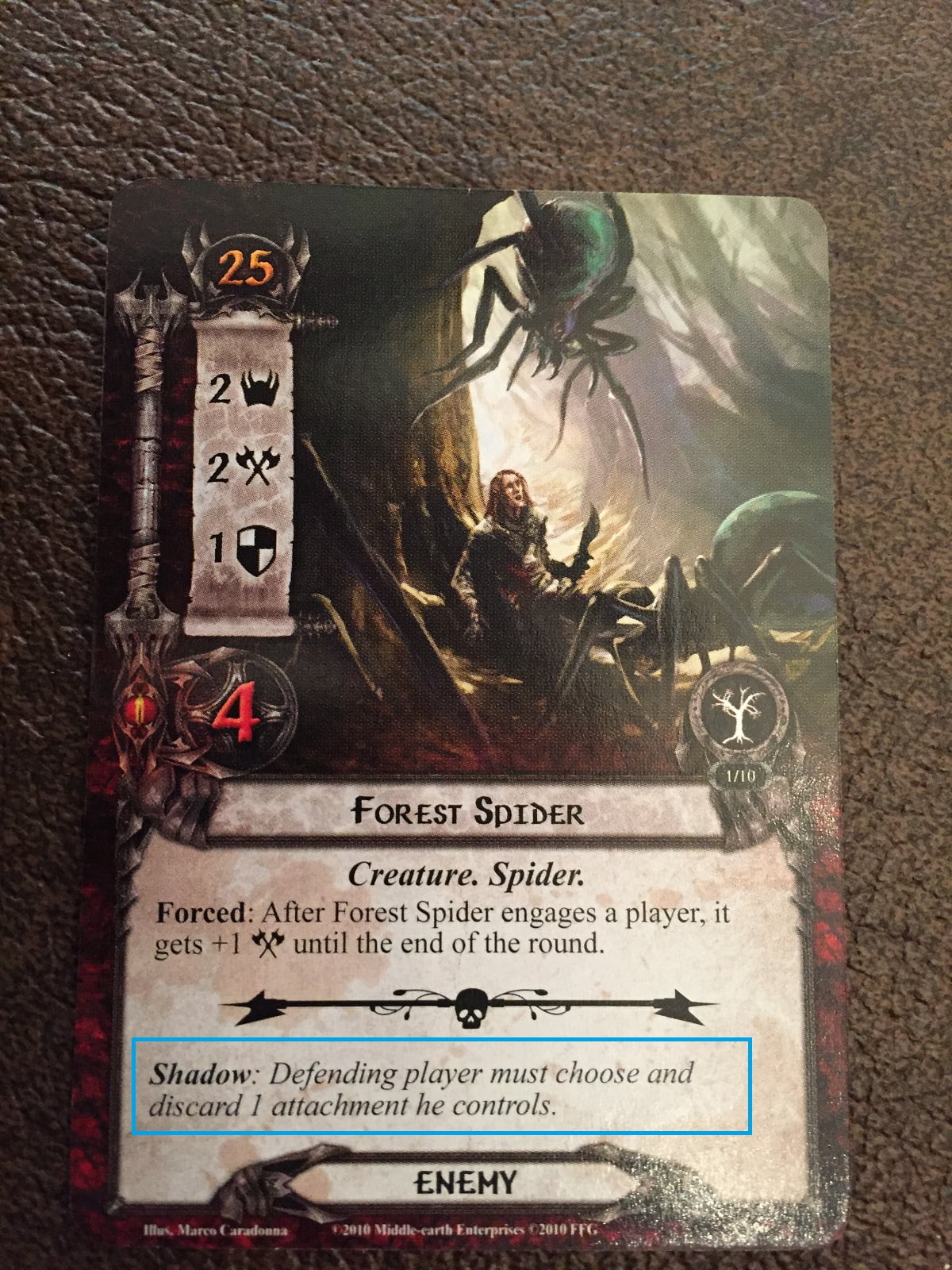
Once a defender is declared, reveal the shadow effect. Some encounter deck cards have a “Shadow” notation on the bottom half (in the blue box in the photo). Apply that effect, if it exists. Then determine combat damage. If the attacker’s strength is higher than your character’s defense, your character is injured. If your character gets injured enough, they are killed and removed from play. If you chose to let an attack go undefended, you must put the full force of that attack on one of your heroes (not an ally). In a defended attack, if the attacker has a force of 3 and you have a defense of 2, your hero would get one point of damage. In an undefended attack, your hero would take 3 points of damage because there was no defense.
Repeat this process with all other enemies attacking you. Then you can attack the enemies. Any character who served as a defender is exhausted, as is every character you committed to your quest. You can only attack enemies with non-exhausted characters, if you have any left. If you have several unexhausted characters left, you can declare all of them against a single enemy. Declare a target enemy and declare who will be attacking. Total up attack strength, compare it to enemy defense, and calculate any damage.
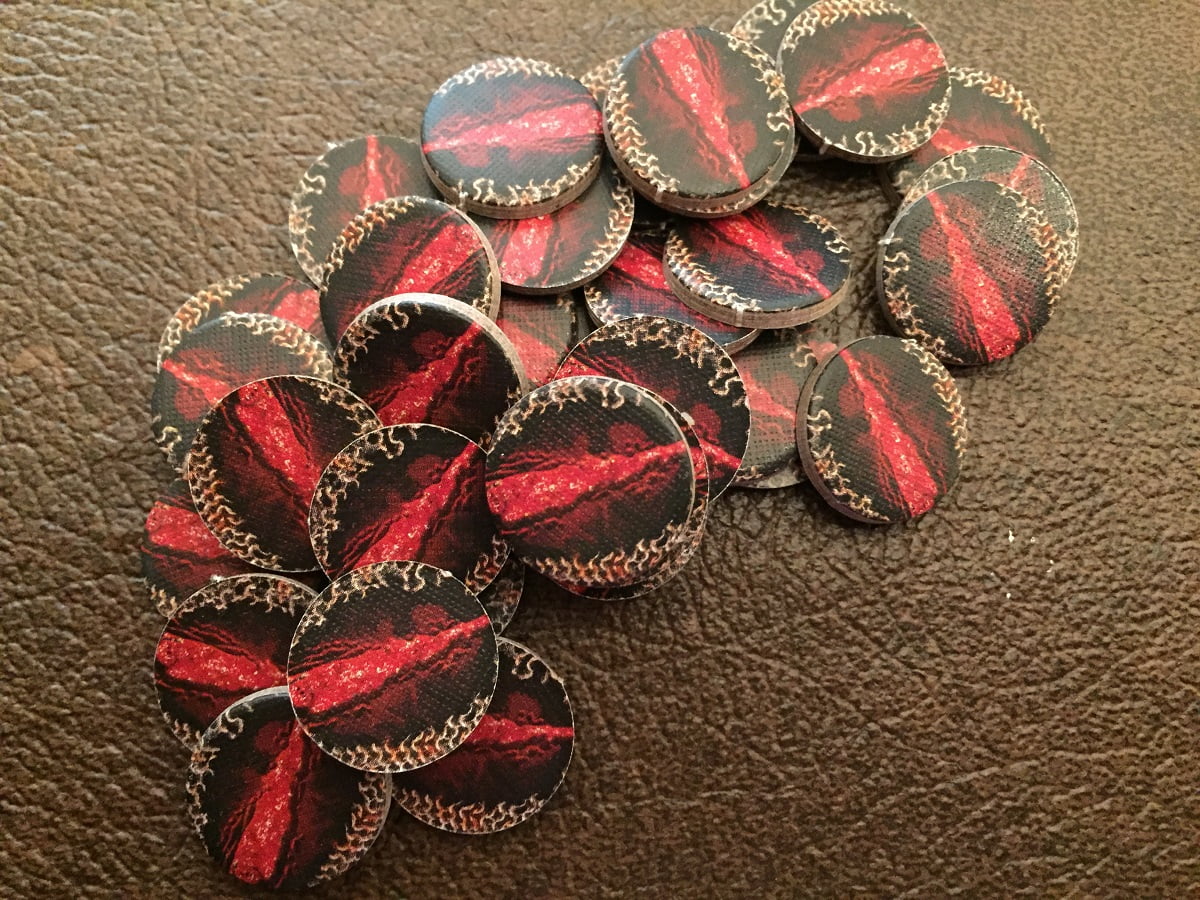
Each damage on a card reduces its hit points by one. If you take an enemy’s hit points to zero, it leaves play. If one of your cards is reduced to zero, it also leaves play. There are some ways to bring an ally back from the discard pile, but if you lose a hero, he or she is gone forever.
Enemies who are not defeated remain in play for the next round, but their shadow effects are removed.
Refresh
In this final phase of the round, all the characters are made ready again. Each player increases his or her threat level by one (on the threat tracker). The First Player token is passed around the table clockwise, so there will be a new first player in the next round. Then you go back to the Resource phase and begin again.
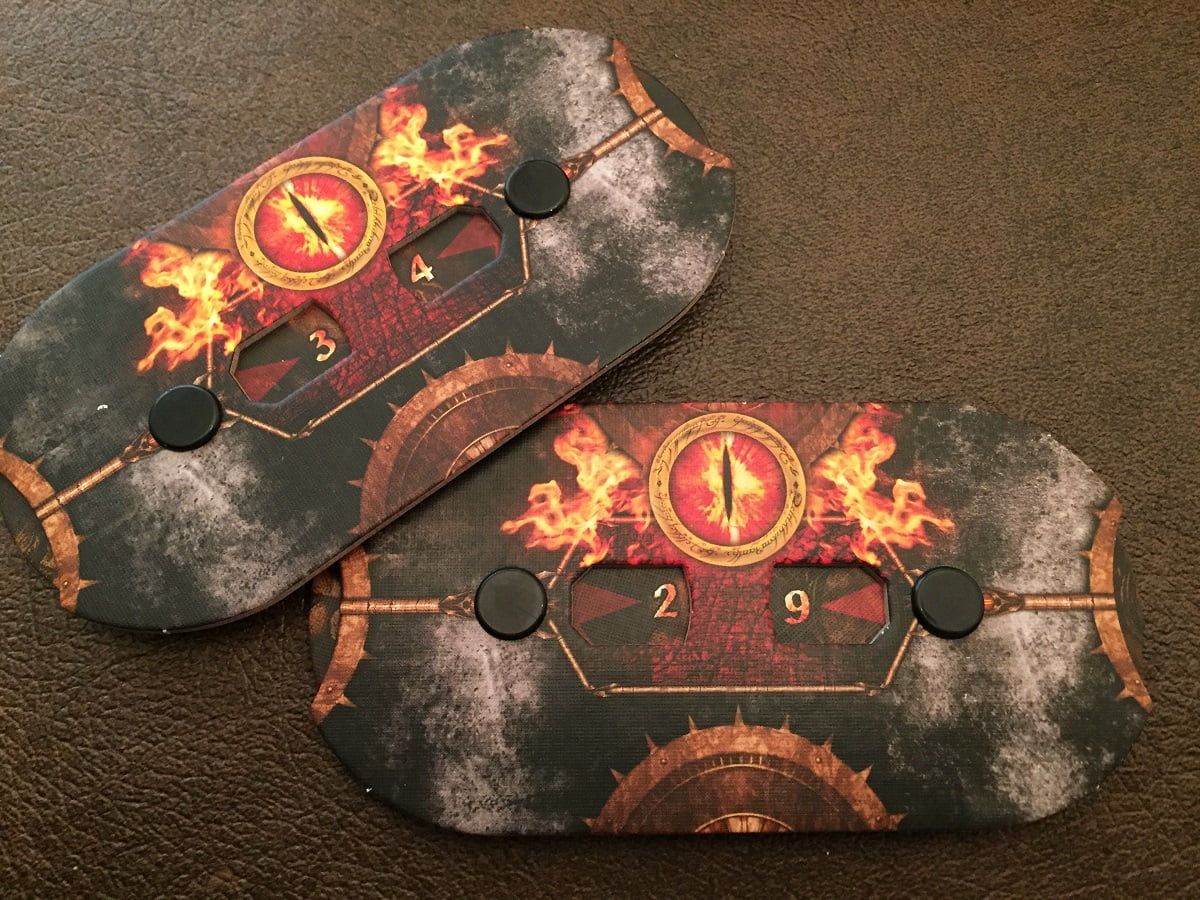
You are eliminated if your threat tracker hits 50 or if all your heroes are killed. You lose if all players are eliminated before completing the last stage of the quest. You win if you complete the quest with at least one player. There is also a rather complicated mechanic for determining your score in the rulebook if you are interested in a more tournament-style experience.
Why You Should Play The Lord of the Rings: The Card Game
If you have a Lord of the Rings fan who also loves tabletop gaming, you need this game. Who am I kidding? You probably already have it! The characters, enemies, and locations, the artwork and the quotes from the book, all combine to create a very authentic Middle Earth environment. You could certainly play the game without ever having read the books, but it will make so much more sense to you if you know why the “For Gondor!” event card affects Denethor but not Glorfindel.

This game is not a good fit for everyone. It takes time to learn how to play, and even after several playthroughs you will still probably find yourself consulting the rulebook about more obscure points. You need to read carefully: does that action affect heroes only, allies only, or any character (hero or ally)? Does this card take effect when it’s in your hand or when it’s in the staging area?
It is also extremely hard, depending on which quest you choose and the player deck you’re working with. Even the pre-designed player decks vary greatly in terms of difficulty. If you’re looking for an easier first experience, start with the Leadership and Lore decks. The Spirit and Tactics decks offer higher starting threat levels and/or fewer opportunities for healing.
But that’s the best part of this game: it is infinitely customizable. In addition to creating your own player decks, there are five play variations: Easy Mode, Standard Mode, Nightmare Mode, Basic Game, and Expert Game. The easy and basic versions allow you to do things like start with more resource tokens, eliminate the use of shadow cards, or remove any encounter deck cards with a specific symbol. Expert challenges you to play through all three scenarios with the same heroes and player deck. Nightmare Mode requires separate Nightmare decks, which must qualify you to enter the service of the King if you survive. Plus, there are tons of different expansion packs currently available, which offer even more quests and characters.
This game is a great entry point into the more complex world of living card games, particularly if you have an aspiring Fellowship member at home. If you’ve never played it, consider your own personal trip to Middle Earth with Lord of the Rings: The Card Game.
Click here to see all our tabletop game reviews.
If you’d like to stay up-to-date with all of our tabletop gaming coverage, please copy this link and add it to your RSS reader.
Disclosure: This game was part of my collection. I received nothing for this review.
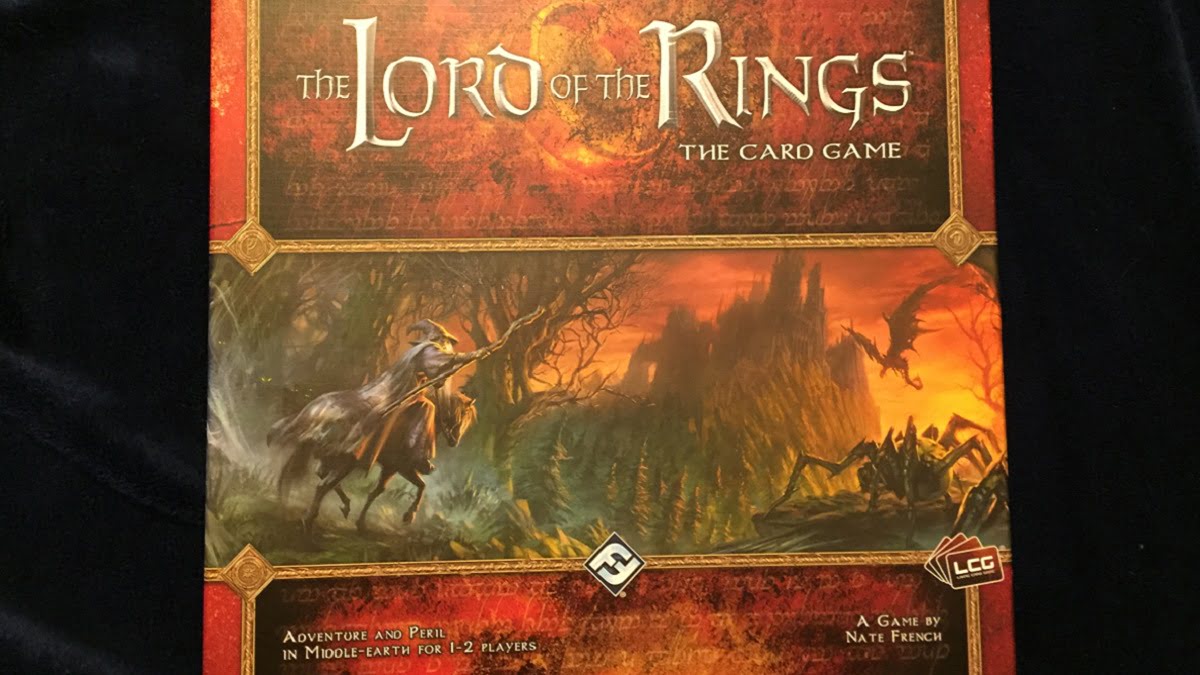


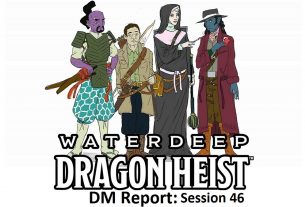


I’m a big fan of this game. I’ve owned it for several years but only recently started expanding past the core set. I’m a terrible deckbuilder, and leaned heavily on the Hall of Beorn (https://hallofbeorn.wordpress.com/) to help me build decks to defeat the different quests.
http://ringsdb.com/ is also a great resource for deckbuilding ideas.
https://talesfromthecards.wordpress.com/2013/09/13/new-player-buying-guide/ is a good place for new players to figure out what to buy next. I’m trying to buy and play in order, progression style.
Hi Tim,
Thanks for the suggestions! This game has a big learning curve, so new players need all the help they can get. Deckbuilders are a whole different realm of tabletop play, but a lot of fun once you get used to them.
Thanks for reading!
You bet! It was cool to see an older game (and one of my favs) pop up for review. Have you been able to defeat the 3rd quest in the core set yet?
No, that one is tricky! But we have a lot of different games and I don’t always get to stay on any one long enough to defeat all the scenarios. Plus, the earliest quests work better when playing with my small LOTR fan at home, so I’ve been replaying the 1st and 2nd quests a fair amount.